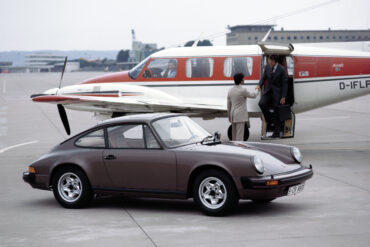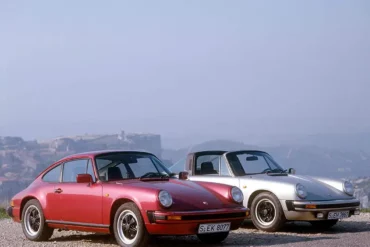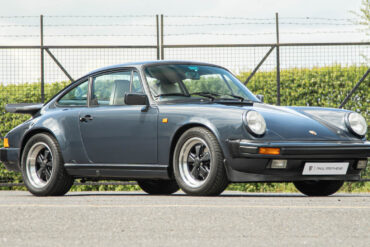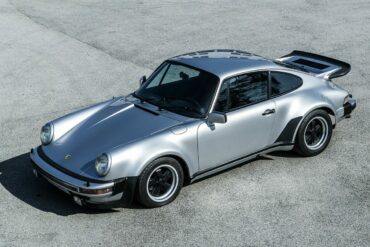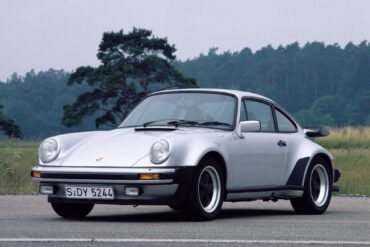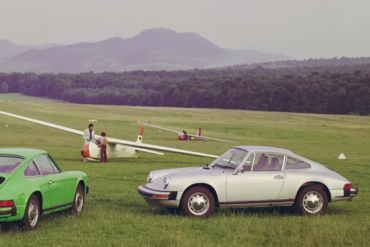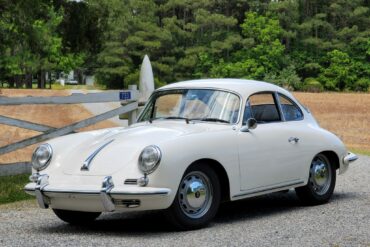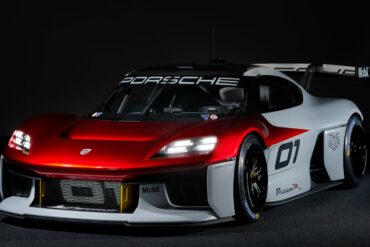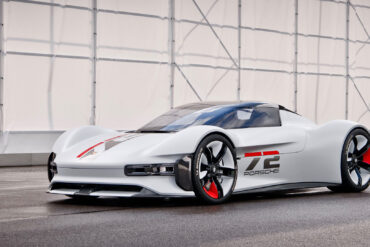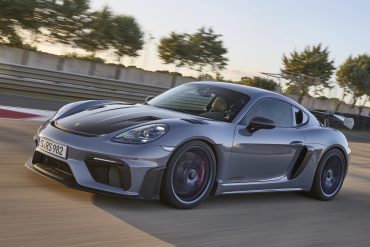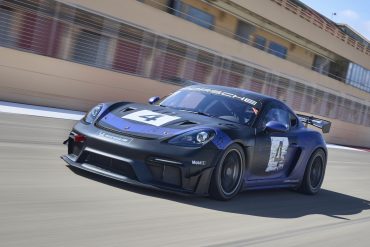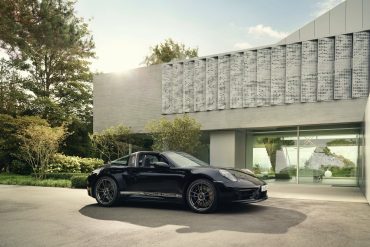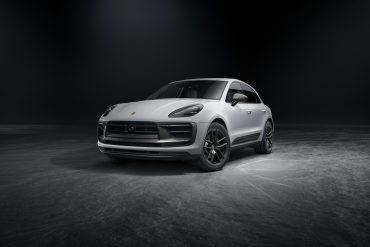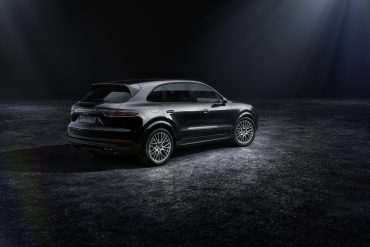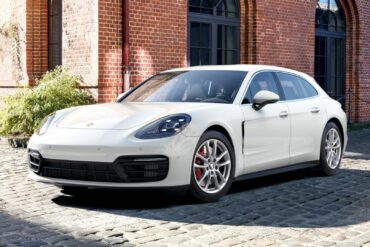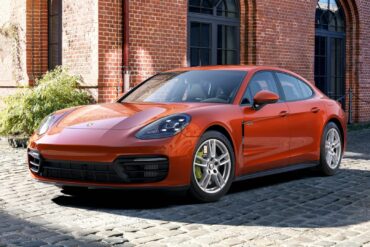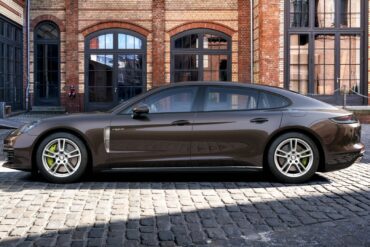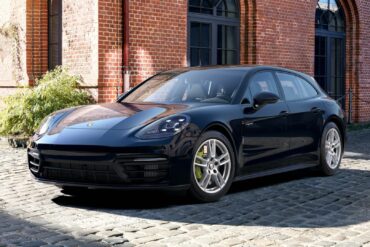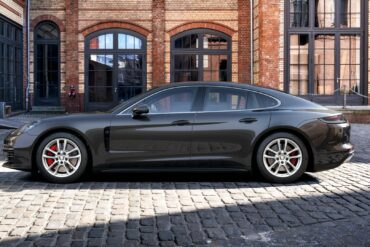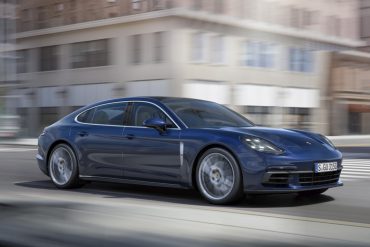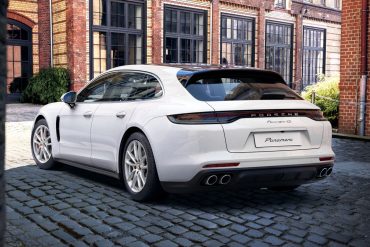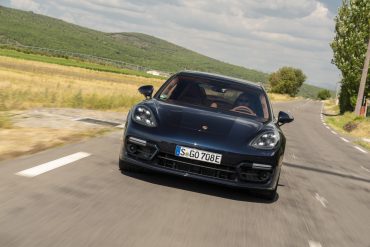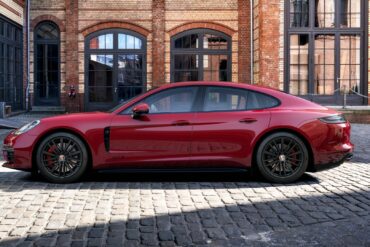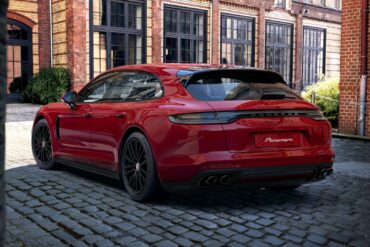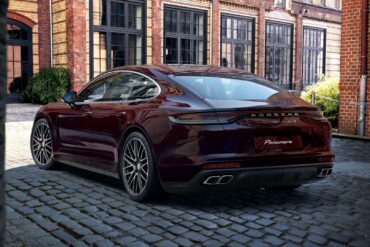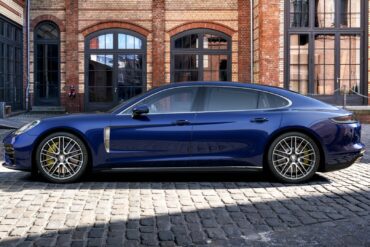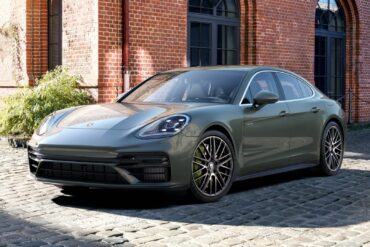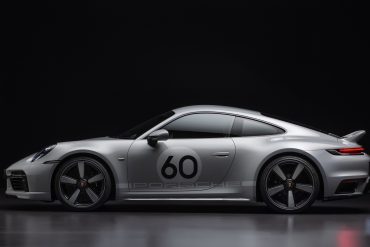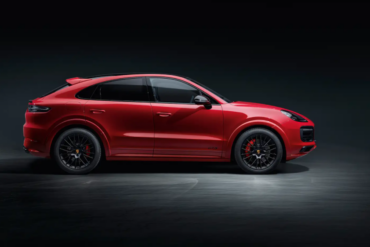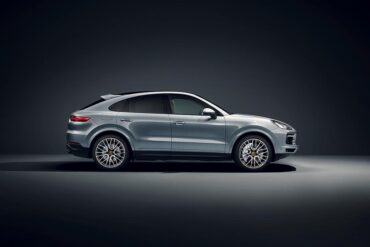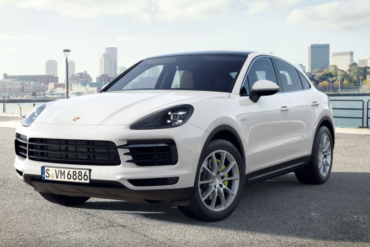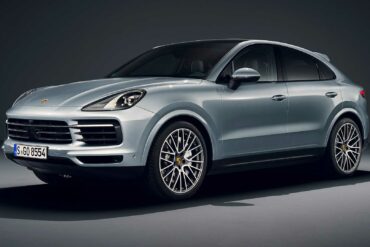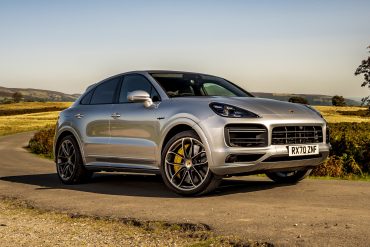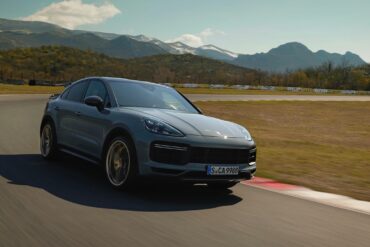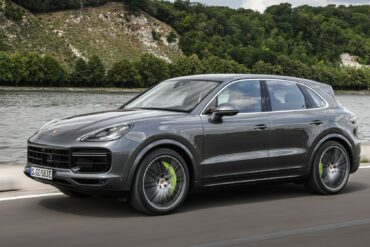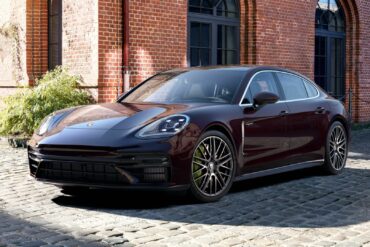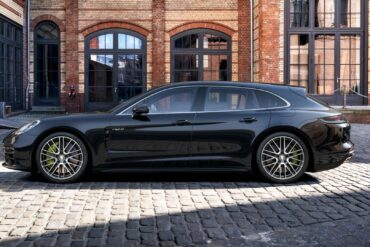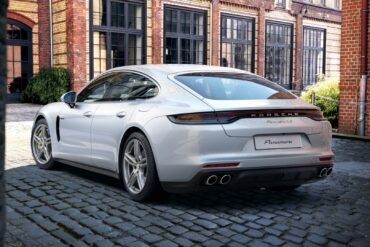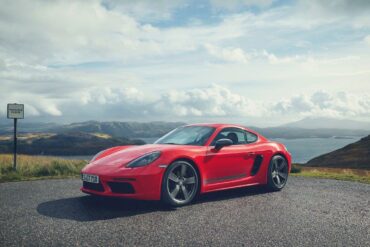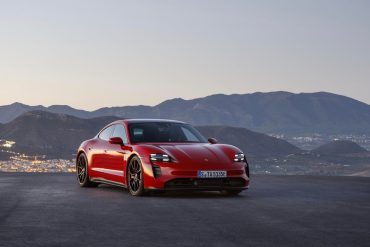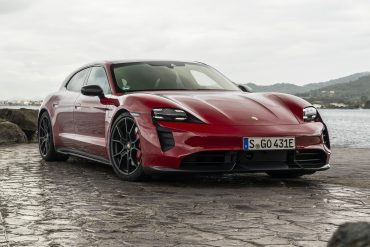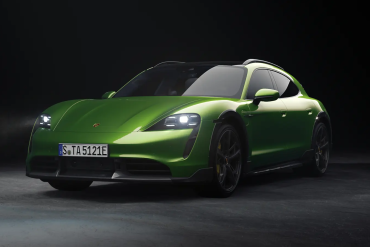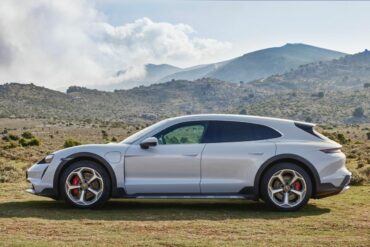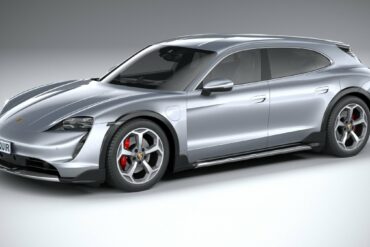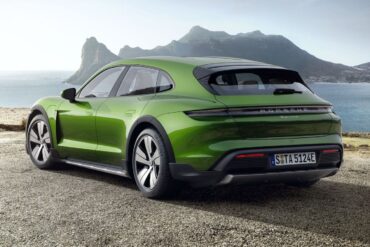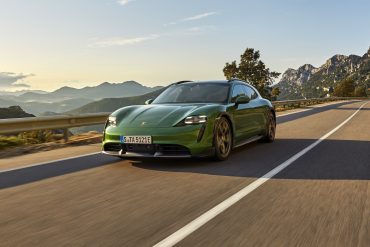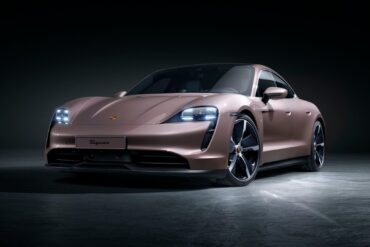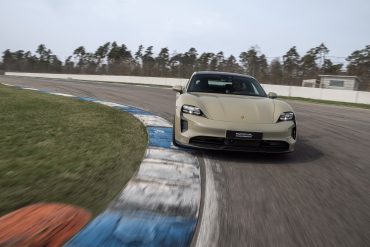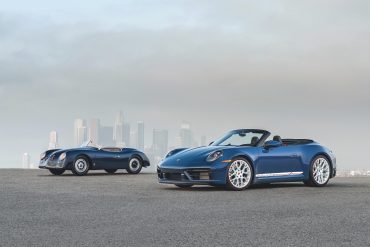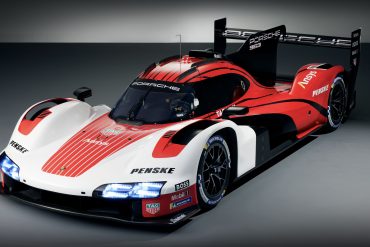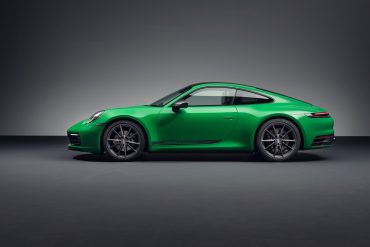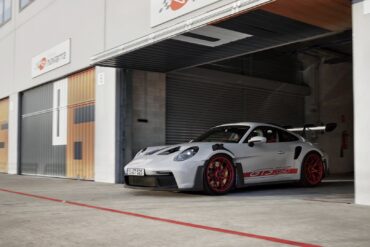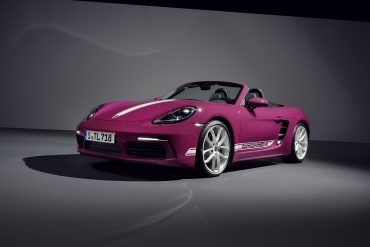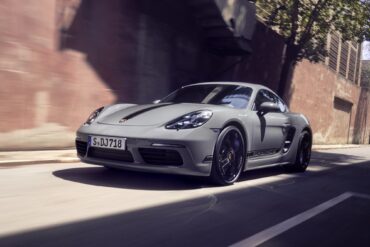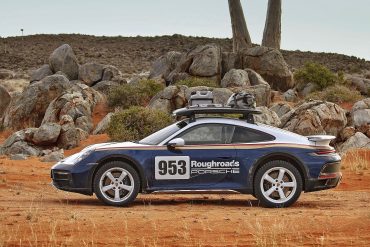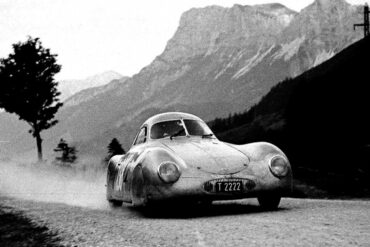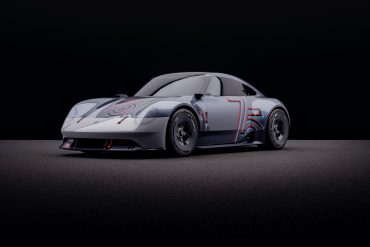As a successor to the Carrera 2.7 MFI, the Carrera 3.0 was fitted with a variation of the 930's engine without a Turbo. During its production period only 3,687 cars were made. The Carrera 3.0 was replaced by the Porsche 911 SC for model year 1978. Between 1976 and 1977, Porsche introduced the Carrera 3.0 with wide rear flares, optional whale-tail, and other luxury options. Built before the ‘911 SC’ it has everything the SC has, and more. It’s a different drive with more power @200bhp; more torque @188 ft/lb @4200rpm and it was 10% lighter too.
The 911 SC effectively replaced the 911 S and was one of Porsche's first models that was meant for the international market. It was sold as a cheaper alternative to the 911 Turbo. The SC used an unblown version the 930 Turbo unit that offered 180 to 200 bhp depending on model year. Options included the rear whale tail, front chin spoiler, Bilstein dampers, 16 inch wheels with Pirelli P7 tires and sports seats. Sometimes dealers lumped these options together to create their own sport package. It was available as a Coupe and Targa from 1978 - 1983, while the Cabriolet version was only available in 1983.
The replacement for the SC series came in 1984 as the 911 3.2 Carrera, reviving the Carrera name for the first time since 1977. This was the last iteration in the original 911 series, with all subsequent models featuring new body styling and new brake, electronic, and suspension technologies. Almost the same galvanised body as the SC. Engine was claimed to be 80 per cent new, and the first production 911 to feature an ECU to control the ignition and fuel systems.
The 911 Turbo was put into production in 1975. While the original purpose of the 911 Turbo was to gain homologation for the 1976 racing season, it quickly became popular among car enthusiasts. Ernst Fuhrmann adapted the turbo-technology originally developed for the 917/30 CAN-AM car and applied it to the 3.0 litre flat-six used in the Carrera RS 3.0, thus creating what Porsche internally dubbed as the 930. Total power output from the engine was 260 bhp and 254 ft lbs of torque.
Porsche made its first and most significant changes to the 930 for 1978 model year, enlarging the engine bore by 2 mm (0.08 in) to a total displacement of 3,299 cc (3.3 L; 201.3 cu in) and adding an air-to-air intercooler. The suspension benefitted from new anti-roll bars, firmer shocks and larger diameter rear torsion bars. While the increase in displacement increased power output and torque, it also increased the weight of the vehicle, which contributed to a substantial change in the handling and character of the car compared to the Earlier 3.0-Litre Models.
Also produced for the 1976 "model year", for the U.S. market, was the 912E, a 4-cylinder version of the 911 like the 912 that had last been produced in 1969. It used the I-series chassis and the 2.0 Volkswagen engine from the Porsche 914. In all, 2092 units were produced. In 1976, the Porsche 924 took this car's place for the 1977 "model year" and beyond. The power was supplied by a 4-cylinder high-performance fuel injection motor also used in the Volkswagen 411.
The Porsche 356 SC, was the top-of-the-line variant in terms of performance for the 356 C Generation, sporting the highest specific output pushrod 4-cylinder engine ever available from Porsche with 107 HP. The SC engine produced 107 bhp at 5200 rpm and featured a stouter counter-weighted crankshaft, short skirt pistons, a more radical camshaft configuration, and large Solex carburetors. The SC was the natural successor of the previous generation Super 90 and represented the top-of-the-line variant for the final evolution of the Porsche 356.
The Porsche Mission R concept is intended to equal the performance of the 992-series 911 GT3 Cup. It features 900-volt fast-charging architecture, an 82.0-kWh battery pack, and modularly integrated front and rear motors with single-speed transmissions featuring straight-cut gears (typical in racing) and mechanical differential locks. The front and rear motors thus provide all-wheel drive and are identical; in "qualifying mode," they produce a total output of 1,073 horsepower, whereas "race mode" delivers 671 total horsepower. The Porsche Mission R is theoretically capable of a best 0-60-mph time of about 2.5 seconds and a top speed of 186 mph or so.
The Porsche Vision Gran Turismo concept is designed for the PlayStation video game, Gran Turismo 7. Porsche, like other automakers, has designed a car specifically for the game. While it may seem like a mid-engined sports car, the Porsche Vision GT is a pure EV. It features no traditional doors. Instead, the upper canopy opens up at the front to access the cockpit. The pure EV uses an 87 kWh battery that would last for 310 miles. The peak power output is a bit under 1,300 hp from an all-wheel-drive setup. The Porsche VGT can accelerate from 0-62mph in a plausible 2.1 seconds and max out at 217mph.
New for 2022 is the most exciting Cayman ever, the 718 Cayman GT4 RS. The GT4 RS is equipped with the same scintillating flat-six engine that powers the 911 GT3. It's a 4.0-liter unit that makes 493 hp and 331 lb-ft of torque in the GT4 RS. Porschephiles will notice that those figures are not quite as high as in the 911 GT3, which packs 502 hp and 346 lb-ft. Big numbers for a small, lightweight car. It is only available with a seven-speed dual-clutch to optimize lap times further. Nobody has driven it yet from the motoring public, but we eagerly await that day and will report back here.
The most significant change is the 4.0 litre six-cylinder boxer engine. This high-revving powerplant has been taken directly from the 911 GT3 Cup race car and develops 500 PS in the 718 Cayman GT4 RS Clubsport – 75 PS more than the previous GT4 Clubsport model. In addition to many upgraded details, the focus in developing the new 718 Cayman GT4 RS Clubsport was on further improving overall performance. The standard 7-speed dual-clutch transmission (PDK) fitted to the car now uses all seven forward gears, rather than six.
In 1972 Porsche Design was founded. The celebratory car is a 911 Targa 4 GTS, painted and finished to commemorate the Chronograph 1, which Porsche says was the first all-black watch. Gloss black paint is highlighted by a Satin Platinum finish on the targa bar and wheels. Inside, the Edition 50 Years Porsche Design—as English majors, you have no idea how painful it is for us to type that—gets black-and-gray checkered upholstery, a slate-gray steering wheel, and plenty of limited-edition badging, including F.A. Porsche's signature embossed into the center armrest. The powertrain is standard for the Targa 4 GTS.
The 2023 Porsche Macan T brings touring style to the Macan. This new model sits between the base Macan and the midlevel S. Positioned between the base Macan and the midrange Macan S, the Macan T packs the same 2.0-liter turbocharged four-cylinder found in the entry-level model, delivering 261 horsepower and 295 pound-feet of torque through a standard seven-speed PDK dual-clutch transmission. The German automaker says the powertrain is good for a 5.8-second 0-to-60-mph dash and a top speed of 144 mph. Unsurprisingly, those are the same factory performance estimates as the standard Macan when fitted with the optional Sport Chrono Package that comes standard on this T.
The third generation of the Porsche Cayenne was unveiled in August 2017. In 2022, the Cayenne added the Platinum Edition to the SUV and coupe body styles. The Platinum Edition Cayenne applies a coat of Satin Platinum paint to a number of the vehicle's badges, as well as its fascia-mounted intake treatment and its distinct 21-inch wheels. Black exhaust tips and window trim add an extra hint of menace to the model.
The Panamera 4 Sport Turismo favours a 'Shooting Brake' style rather than being a pure wagon. This is evidenced by its sloping roofline towards the rear, sacrificing cargo space for a more stealthy profile. In addition, there's the pronounced shoulder and elongated window line, which lend the vehicle its striking appearance. The car slots in just above the base Panamera in a lineup that includes up to twenty-five different variants. The '4' references the standard all-wheel-drive, while the 'Sport Turismo' badging hints at more power and agile handling compared to the base trims.
The Panamera 4 E-Hybrid still gets the 2.9-litre V6 - from the non-hybrid variant - that's good for 325 hp and 331 lb-ft of torque. In addition to that, there's an electric motor and battery combo that supply an extra 134 hp and 295 lb-ft of torque. In all, the Panamera 4 E-Hybrid boasts a maximum combined output of 455 hp and 516 lb-ft of torque, pushing the car well into sports car territory. The car weighs almost 5,000 lbs but will still accelerate to 60 mph in an impressive 4.2 seconds with the Sport Chrono Package.
The Porsche Panamera 4 E-Hybrid Executive is specially tailored for those who enjoy spending time in the back seat. The body has been lengthened by 15cm, creating valuable space for rear passengers in particular. It's essentially a long-wheelbase version of the Panamera, with enhancements like eight-way power adjustment for the rear seats, heated rear seats, and power sunblinds for passengers in the back.
The single most important distinction between this model and the Panamera 4 Sport Turismo is the 'E-Hybrid' badging. With the E-Hybrid Sport Turismo, Porsche has been able to combine performance, ample space and fuel economy into one family-friendly package. Like the sedan variant, the Panamera 4 E-Hybrid Sport Turismo is driven by a hybrid powertrain featuring technology from the 918 Spyder.
The Panamera 4 is the first model in the Panamera lineup to feature all-wheel-drive (evidenced by the '4' badging). A few steps above sits the Panamera 4S, a sedan that offers more oomph in performance. After all, that is why Porsche added the 'S' for 'Sport' to the name. It all starts with the engine. The twin-turbocharged V6 has been upgraded and now puts out 443 hp and 405 lb-ft of torque. That's a significant increase from the 325 hp and 331 lb-ft of torque offered in the base Panamera 4.
The Panamera 4S Executive is just a 'stretched-out' version of the regular Panamera sedan. The wheelbase has been lengthened by as much as 15 centimetres, an increase that mostly benefits the rear passengers. The Panamera 4S Executive sits above the Panamera 4 Executive, and they share several similarities, such as the panoramic sunroof, heated rear seats and power sunblind in the rear. Style-wise, the Panamera 4S Executive also boasts silver accents around the fenders and side skirts.
The Turismo Panamera models offer more practicality than the sedans, with the wagon body style offering valuable additional cargo space. However, there's also plenty of performance on offer. Take the Panamera 4S Sport Turismo, for example. It boasts a total of 1,384 litres with the rear seats folded, ideal for a weekend shopping trip. However, under the hood lies a potent engine in the form of a turbocharged V6 unit.
First, there's the extra boot space, courtesy of the wagon body style. It gives the Sport Turismo models more practicality over the sedans. Also, the Panamera 4S E-Hybrid is no slouch in the power department. It combines a 443-hp V-6 with a hybrid system to crank out 552 hp. That makes it the third-most-powerful Panamera variant, behind the Turbo S E-Hybrid and the Turbo S. In full attack mode, this family hauler can punch its way to 60 mph in less than four seconds
The Panamera Hybrid models have their strengths, but there is still nothing quite like the visceral experience behind the wheel of a high-performance vehicle with a formidable internal combustion engine, a formidable unit like the V8 found in the Panamera GTS (short for 'Gran Turismo Sport). It plays a significant role in portraying the character of the sports sedan as a lively performance and yet, family-friendly vehicle.
The Panamera GTS Sport Turismo costs only $6,900 more than the sedan variant in base trim. With the same powertrain and better practicality, this performance wagon may just be the most significant direct threat to the Panamera GTS sedan. The extra boot space, up to 49 cubic feet, with the rear seats folded down, makes the Panamera GTS Sport Turismo perfectly suited for a weekend trip to the shopping mall.
The Porsche Panamera Turbo S is unquestionably a performance beast, with plenty of power and presence to go with its muscular stance. However, the best bit about the Panamera Turbo S may be how it cleverly masks its brute strength and capabilities beneath an elegant layer of the silky-smooth ride and top-class luxury. In that sense, it perfectly fits the bill of a luxury performance sedan - just what Porsche set out to achieve.
This 'limousine' performance sedan offers the benefits of the non-executive Panamera Turbo S - plenty of power, athletic handling and overall elegance. However, the 'executive' badging means more space on the interior, especially for the rear passengers, courtesy of a wheelbase that's about six inches longer than the regular Panamera sedan. The powertrain is carried over unchanged from the non-executive version.
There is nothing pretentious about the formidable Panamera Turbo S E-Hybrid. The big sedan is all about serious power, performance and style. It is currently the second-most-powerful car in Porsche’s entire lineup, only behind the 700-hp 911 GT2 RS. Only a few rivals can match the luxury sedan in terms of raw power.
A total of 1,250 examples of the limited-edition model by Porsche Exclusive Manufaktur. While the original was a Carrera S, this time around, the power and handling come from a much feistier car, the Type 922 Turbo S. Returning is that amazing grey paint, that swooping ducktail spoiler, and the double-bubble roof. All-new is a mildly detuned Turbo S engine producing 543 HP and 442 lb-ft of turbocharged torque, mated to what can only be called a gift from the gods, a 7-speed manual gearbox.
Three letters are all it takes to describe the glint in your eye and intense goosebumps – GTS. Pure and thrilling: the Cayenne GTS models bring a motorsport atmosphere to the road. Enough power to strive for more freedom: with 453 hp and 457 lb.-ft. of torque, the 4.0-liter twin-turbo V8 engine exudes a drive that helps achieve your goals. The striking black accents on the front fascia, sideskirts and aerodynamic roof spoiler combined with the coupe bodystyle.
The Cayenne Coupe is a version of Porsche's largest SUV with a heavy dose of extra swagger. Porsche introduced the new variant a year after the debut of the third-generation Cayenne, for the 2020 model year. While we like the look of the coupe, it feels out of place on the base Cayenne (which is more a family SUV choice). A nice package, but we would recommend spending a bit more and going for the Cayenne S or GTS.
Porsche fitted the Cayenne E-Hybrid with a turbocharged 340 hp 3.0-liter V6 engine combined with a 136 hp electric motor for the drivetrain. Total combined power output reached 462 hp. The whole assembly was mated to an 8-speed automatic transmission that sent the power in all corners. Now it comes with a coupe body? Not sure the combination makes much sense to us, but hey this is Porsche and they know more than we do I guess.
The 434-hp Cayenne S goes from 0 - 60 mph in just 4.2 seconds, same as the SUV. In fact, the Coupe and SUV share everything from engines to suspension components to interior trimmings and onboard tech, with only a sloping roofline setting them apart. Our advice. If you want less practicality with a cool fastback roofline, the Porsche Cayenne S coupe is a more stylish version of the Cayenne S. A great all rounder.
The Cayenne Turbo S E-Hybrid Coupe mixes ultimate performance with comfort and Infotainment. The Turbo GT has all the attributes to be ahead of the game from the start. The twin-turbo V8 engine and electric motor combination make it an absolute monster. So much so, that it became top dog in the Porsche SUV lineup, relegating the 541-hp Cayenne Turbo to second place. This is an SUV that has the price, prestige, and performance, but it is the Coupe that has the looks. Generating 670 combined horsepower and 633 lb-ft of torque.
Porsche is stuffing a built twin-turbocharged 4.0-liter into the Cayenne Coupe, and it's the most powerful V-8 the German automaker has ever produced. It makes 631 horsepower in this new Turbo GT model, and Porsche says its factory driver Lars Kern set a new SUV lap record at the Nürburgring Nordschleife in it lapping the 12.9-mile course in 7:38.9. The new Cayenne will arrive in the U.S, only in Coupe form, next year starting at $182,150.
The Cayenne Turbo S E-Hybrid models, mix ultimate performance with comfort and Infotainment. The twin-turbo V8 engine and electric motor combination make it an absolute monster. So much so, that it became top dog in the Porsche SUV lineup, relegating the 541-hp Cayenne Turbo to second place. This is an SUV that has the price, prestige, and performance. Generating 670 combined horsepower and 633 lb-ft of torque.
This Porsche limousine boasts impressive performance stats like the other Turbo S E-Hybrid variants. However, a lengthened wheelbase with a bias towards rear-seat luxury is the 'cherry on the cake' that sets this one apart. The car promises a sporty package with the luxury of a limousine, and to be fair; it mostly delivers on both counts.
The Panamera Turbo S E-Hybrid Sport Turismo is extreme indulgence at its peak. A family wagon with almost 700 hp on tap and the ability to launch hard enough to strain your back muscles. Porsche claims the car can hit 60 mph in just 3 seconds. It's impressive on its own, but even then, it seems the carmaker was being conservative as some motoring journalists were able to clock a time of 2.7 seconds. That's faster than a Ferrari 488 GTB!
This Panamera variant pairs a 2.9-litre twin-turbocharged V6 with an electric motor to serve up 552 hp and dynamism usually associated with non-hybrid coupes. The best part? The 'E-Hybrid' badging means this sedan also delivers the benefits of greater fuel efficiency and lower emissions. Then there's the fact that all electrified Panameras for the 2021 model year have 27% more battery capacity.
The Boxster 718 T was released for the 2020 model year as more sport-oriented versions of the base 718 models. As such, the T features the same 2.0-litre flat-4 engine as the base 718 but adds performance-oriented options such as Porsche's sport suspension system, the Sport Chrono package, and a limited-slip differential, along with minor cosmetic differences including special decals along the lower doors, a smaller-diameter steering wheel, door pull straps in place of standard door handles, wheels from the Porsche 992 Carrera S, and black rear badging.
Most of us have come to know what Porsche’s GTS lineage stands for: a focus on vehicle dynamics while deferring in terms of sheer horsepower to the most powerful in the range; a unique look and a wealth of standard equipment, especially the good performance stuff. Same formula for the Taycan GTS. It sits between the 4S and the Turbo and has 590 hp and 623 ft lbs, good for 0 - 60 mph 3.5 seconds. It feels much more rear-driven than the Turbo and has way more engaging handling characteristics as a result.
The Sport Turismo bodystyle is unique the to Taycan GTS for U.S buyers. It is the sexiest bodystyle in the range and more practical than the sedan too. It isn't the most powerful in the range; but it gets a wealth of standard equipment, especially the good performance stuff. The Taycan GTSSport Turismo sits between the 4S and the Turbo and has 590 hp and 623 ft lbs, good for 0 - 60 mph 3.5 seconds. It feels much more rear-driven than the Turbo and has way more engaging handling characteristics as a result.
In 2022 the base model was released in this new Sport Turismo body style. This entry-level variant in the Taycan lineup is cheaper than a 911 and Panamera, making it an interesting prospect. It gets one less motor than the Taycan 4S and less standard equipment. Horsepower and torque figures change depending on whether you get the standard 79-kWh battery or pay $5780 for the 93.4-kWh Performance Battery Plus. The bigger battery gives you 469 hp and 263 lb-ft of torque when using launch control, or 375 hp in regular operation.
With a spacious interior and two luggage compartments, providing comfort and convenience for four, the Taycan Cross Turismo body style is more practical than its sedan sibling. Unlike the Taycan sedan, all Cross Turismo models come standard with the larger of the two available battery packs, an 83.7-kWh unit. In the 4, that pack powers the two motors to an available 469 horsepower when using launch control. During normal use, you get 375 horsepower and 368 pound-feet of torque.
Porsche's Taycan Cross Turismo is the wagon addition to the Taycan EV family and the 562-hp 4S variants is probably our favorite version. Why? Because the Taycan Cross Turismo's combination of looks, speed, and space put it into the realm of the now-legendary wagons like the Audi RS6 Avant and Mercedes-AMG E63 S wagon and they are some of our favorite cars on the planet. Do yourself and your family a favor and get this baby now.
The performance-oriented all-electric station wagon has arrived and we like what we see. The Taycan Turbo Cross Turismo gets the same dual-motor all-wheel-drive as the Taycan sedan featuring a Gravel drive mode, standard air suspension, and minor ride-height increases. With a permanent-magnet motor at each axle, the rear drives a two-speed automatic and the front a single-speed gearbox. Power is a kind of nuts 616 hp and 626 lb-ft, which we think is more that enough for the kids daily trip to school. Feels much the same as the sedan version but looks way cooler.
With 750-horsepower, launch control and gravel mode in a family-friendly wagon, this may be the most practical car on the planet. Take the screaming fast all-electric Taycan Turbo S—the fastest, most powerful version atop the Taycan range—and make it a wagon with a little more ground clearance (0.78 inches) and more headroom (3.62 inches) in the rear seats, and you have the Taycan Turbo S Cross Turismo. The all-wheel-drive Taycan Turbo S Cross Turismo has one electric motor per axle, with a one-speed transmission up front and a two-speed transmission in the rear.
This entry-level variant in the Taycan lineup is cheaper than a 911 and Panamera, making it an interesting prospect. It gets one less motor than the Taycan 4S and less standard equipment. Horsepower and torque figures change depending on whether you get the standard 79-kWh battery or pay $5780 for the 93.4-kWh Performance Battery Plus. The bigger battery gives you 469 hp and 263 lb-ft of torque when using launch control, or 375 hp in regular operation. According to Road and Track, the "base model could be the pick of the lineup".
Porsche is celebrating the 90th anniversary of the Hockenheimring track with a special edition of one of its models. The Porsche Taycan GTS Hockenheimring Edition is the first special edition based on the brand's first electric vehicle. It features several elements to set it apart. It all starts with the Stone Grey paint and "Bronzite" accents to bring a dash of flair. On the inside, Porsche Exclusive Manufaktur have selected black leather for the upholstery, while the contrasting elements are finished in a shade that is called "Island Green."
If you're not one for celebrating special models that don't improve performance, this 2023 Porsche 911 Carrera GTS Cabriolet America will be right up your alley. Porsche has gone beyond just slapping on some new paint, unique trim, and special wheels. There is some performance to go along with the history behind the America name-plated Porsche, besides the incredibly long name.
Porsche 963 LMDh – Reviews, Pricing, Specs & Buyers Guide Porsche’s first customer prototype in more than a decade comes with...
The return of the Touring badge, now on the Type 992. In a way, the car may seem sparingly equipped, and apart from the paint color, the wheels, and if you want a 7-speed manual or 8-speed PDK, it is. But it’s what it’s equipped with that makes the Porsche drivers smile. The purist-focused Carrera T is perfectly specced for fun, with its sweet rear-wheel drive, no rear seats, and a manual gearbox for just $118,050.
Arguably the most extreme 911 to be build as a production car for the road and track. The most significant improvements made to the RS—over both the 992 GT3 and the previous-gen 991 GT3 RS—were applied to the aerodynamics and chassis departments of the car. The new 911 GT3 RS is even more optimized for track use than its predecessors. The spontaneously responsive, high-revving four-litre, six-cylinder boxer engine has proven ideal for use at track days and club sport events.
Fresh colours and harmonious contrast packages characterise the new Porsche 718 Boxster Style Edition and 718 Cayman Style Edition sports cars. Available on the base model, this is a sweet package for the buyer looking to jazz up their base Cayman or Boxster and make them really special. Underlining Porsche’s commitment to ever more creative and vibrant bespoke finishes, the new models are characterized by special colors and matching contrasting elements. This is evident with the new color Ruby Star Neo, a modern interpretation of the color used on the 964 Carrera RS.
Fresh colours and harmonious contrast packages characterise the new Porsche 718 Boxster Style Edition and 718 Cayman Style Edition sports cars. Available on the base model, this is a sweet package for the buyer looking to jazz up their base Cayman or Boxster and make them really special. Underlining Porsche’s commitment to ever more creative and vibrant bespoke finishes, the new models are characterized by special colors and matching contrasting elements. This is evident with the new color Ruby Star Neo, a modern interpretation of the color used on the 964 Carrera RS.
Porsche makes sports car history by launching its first publicly available rally car, the $223,450 911 Dakar. After extensive testing, Porsche has settled on a 3.0-liter twin-turbo six-cylinder boxer engine with 473 hp and 420 lb-ft of torque and an 8-speed PDK. True to rally form, an 80-mm suspension lifts the car, along with an optional roof rack and model-specific Pirelli Scorpion all-terrain tires.
Story by Karl Ludvigsen Creating his own car company was “an old idea of my father’s,” Ferry Porsche recalled. The...
Built on the technology platform of the 718 Cayman GT4 RS, the Porsche Vision 357 is a design study that represents outstanding sports car performance. The exterior concept study is the highlight of the special exhibition “75 Years of Porsche sports cars” at the Volkswagen Group’s “DRIVE” Forum in Berlin. The fundamental concept reflects the interplay between tradition and innovation: what would the dream of a sports car of Ferry Porsche might look like today? A tribute to the 356 on its 75th anniversary.
No More Content


